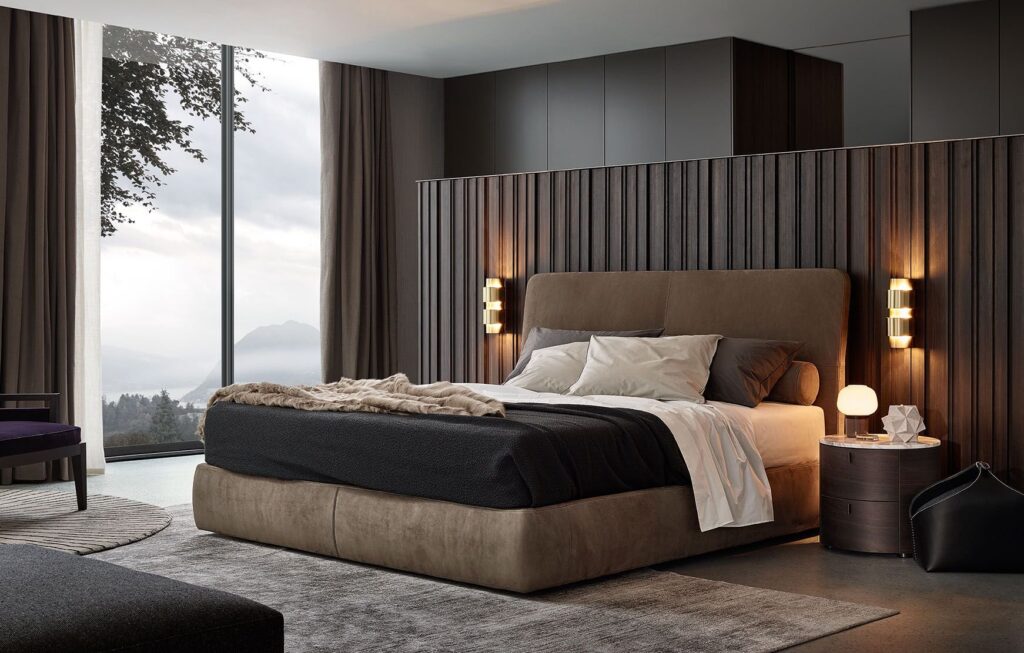
Various Types and Sizes of Beds in Interior Design
In the modern world, choosing a bed is not just about selecting a place to sleep; it is an essential part of the overall interior design. It’s no wonder that the variety of bed options today is so diverse. From sizes and shapes to materials and styles, everything plays a significant role in creating the perfect space for relaxation. A bed can become a bold accent in the interior or blend modestly with the overall room style, emphasizing its unique features. Therefore, choosing a bed is always a complex decision that needs to consider numerous factors, from room dimensions to individual comfort preferences.
Modern manufacturers offer a wide selection of beds in different sizes, ranging from cozy single beds to luxurious “King-size” ones. Additionally, there are beds of unconventional shapes available, such as round beds or even beds with unique designs like suspended, bunk, or transforming beds.
In this article, we will thoroughly explore various types and sizes of beds, their features, and their place in modern interior design. We will help you understand essential aspects to consider when choosing a bed for your home.
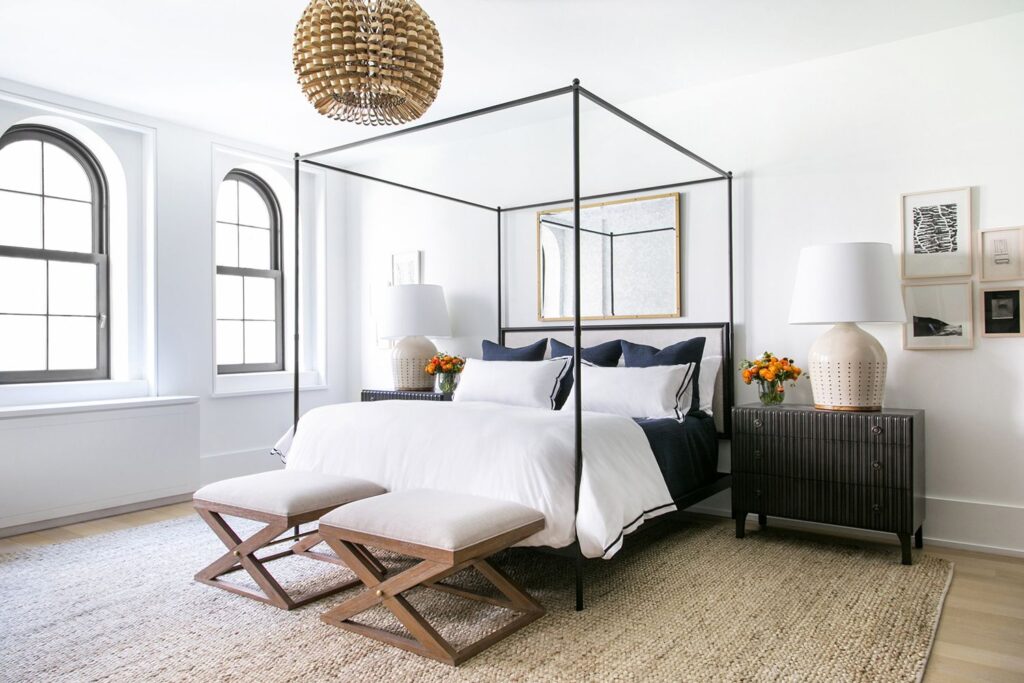
Traditional Beds: Characteristics and Features
When discussing traditional beds, it’s essential to focus on the most common types, such as “King-size,” “Queen-size,” and single beds. These models are standard in many homes worldwide and offer an excellent blend of comfort, functionality, and style.
“King-size” is a true giant among beds, perfect for couples who want maximum sleeping space. Such a bed typically has dimensions around 193 cm in width and 203 cm in length, making it the largest among standard beds. Having such a spacious bed in the bedroom speaks of comfort and coziness but requires a sufficiently large space to accommodate it.
“Queen-size” is slightly smaller in size but still provides enough room for two people. The dimensions of such a bed usually measure around 152 cm in width and 203 cm in length. This option serves as a golden mean between a “King-size” bed and a single bed, offering comfortable resting space without taking up excessive room space.
Single beds are the ideal choice for a single person. Their standard dimensions are 92 cm in width and 203 cm in length, making them suitable for bedrooms of any size. These beds are often chosen for children’s or guest rooms, as well as additional sleeping spaces.
The choice of bed type and size should be determined not only by the room’s space but also by personal preferences regarding comfort and convenience. It’s important to remember that a high-quality and properly selected mattress plays an equally vital role in ensuring healthy sleep, as the bed itself. Therefore, when choosing a bed, it’s essential to pay attention not only to its size and design but also to selecting a suitable mattress.
In conclusion, traditional beds, whether “King-size,” “Queen-size,” or single beds, remain timeless classics in bedroom design. They offer comfort, functionality, and a familiar style that will adorn any room and create ideal conditions for sound and healthy sleep.
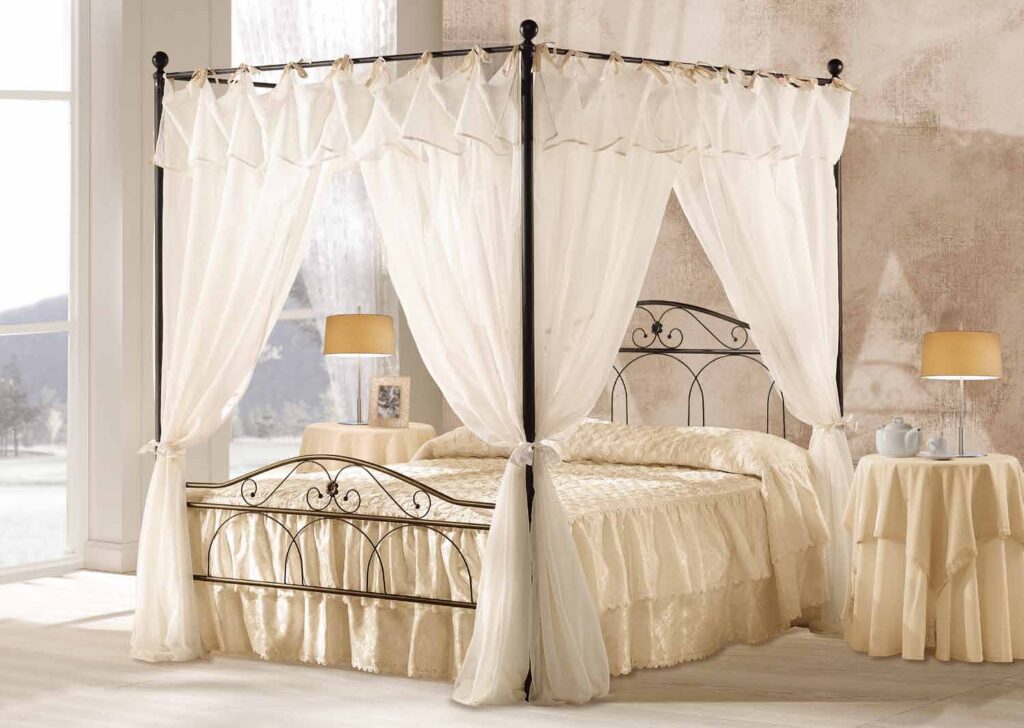
Unusual and Original Types of Beds
Let’s consider more unusual and original types of beds that can become real decorations for any bedroom and complement it not only functionally but also aesthetically.
A canopy bed is an option that will add a touch of romance and luxury to the interior. The canopy can be made from various materials, ranging from transparent chiffon, which adds airiness, to heavier fabrics for creating a cozy atmosphere. Additionally, a canopy bed provides additional protection from light, noise, and insects.
A suspended bed is an excellent choice for those who want to add a touch of modernity and originality to their bedroom. It can be hung from the ceiling using chains or ropes, creating a sense of lightness and weightlessness. Such a bed not only saves space but also becomes a genuine decorative element.
A bunk bed, or loft bed, is a practical solution for small spaces or for those living with a roommate. They allow for efficient use of space, freeing up additional room for storage or a play area.
A loft bed is another type of bed that involves placing the sleeping area on the upper level, with the space beneath it serving as a workspace, wardrobe, or even a mini-living room. This allows for space-saving and makes the room more functional.
A transformer bed can change its size or functions depending on needs. For example, during the day, it can serve as a sofa or a workstation, while at night, it can transform into a full-fledged sleeping area. Such a bed is ideal for small apartments or studios.
A bed of non-standard shape is an excellent way to emphasize your individuality and make the bedroom unique. You can choose a bed in the shape of a car, a ship, a rocket, or any other object that you or your child like.
In conclusion, the choice of bed type should be determined not only by the room size and functionality but also by your personal preferences, taste, and lifestyle. After all, a bed is not just a place for sleep but also an important interior element that creates an atmosphere and mood in the room. Therefore, it is essential to approach the bed selection considering all these factors.
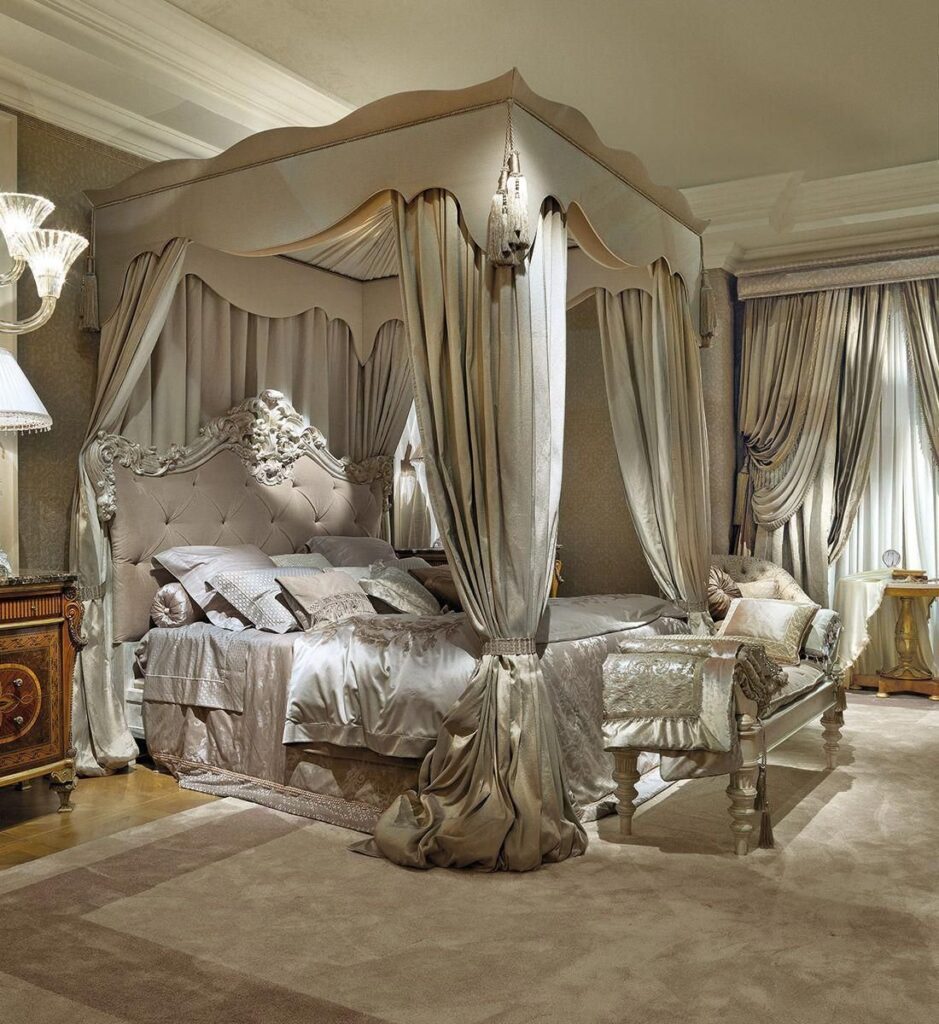
Choosing a Bed Based on Room Size and Interior Style
When choosing a bed, it is essential to consider not only its functionality and comfort but also the room’s size in which it will be placed, as well as the interior style. The bed is a central element in the bedroom, and its choice largely influences the overall impression of the room.
In smaller spaces, it is advisable to choose compact bed models so that they do not occupy too much space. Transformer beds or bunk beds are excellent options for small apartments or children’s rooms.
If space allows, you can opt for more impressive models, such as a “King-size” bed or a canopy bed. They will become vibrant decorative elements and highlight the luxury and grandeur of the interior.
The interior style also plays an important role in choosing a bed. For example, for a “minimalist” style interior, a simple, straightforward bed without unnecessary details would be suitable, while for “country” or “Provence” styles, it is better to choose a model with graceful decorative elements.
The choice of a bed is a responsible and crucial decision that requires thoughtful consideration. After all, a properly chosen bed not only ensures a comfortable rest but also becomes an interior adornment, bringing harmony and completeness.
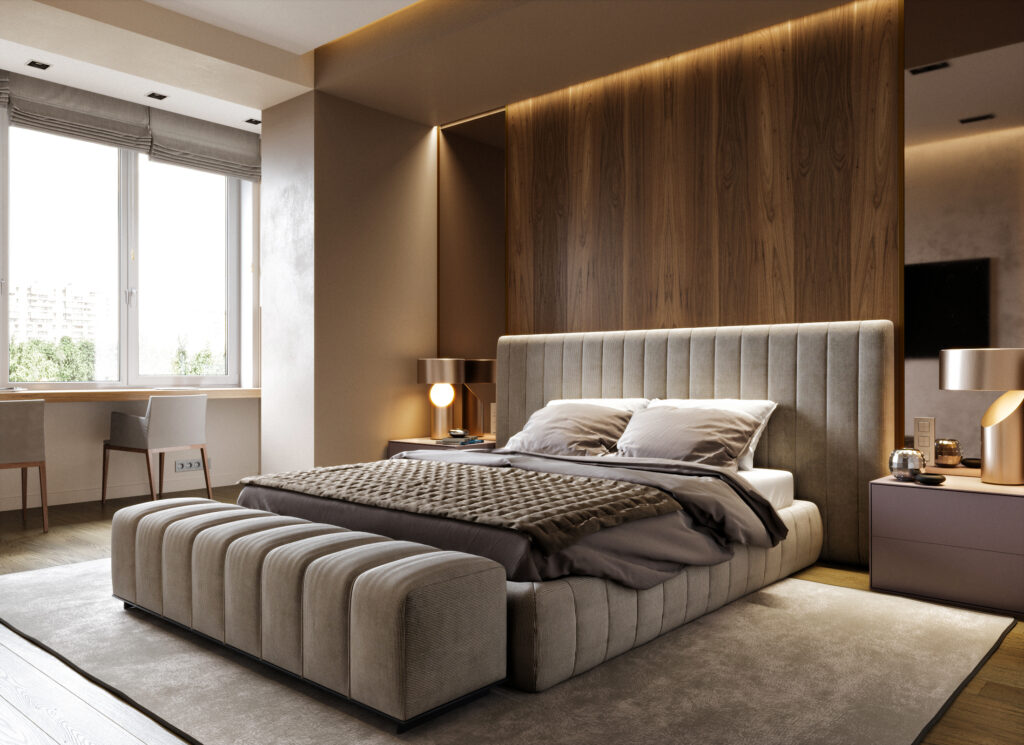
Conclusion: How to Choose the Perfect Bed for Your Home
The question of choosing the perfect bed always remains relevant because the bed is a place where we spend a significant part of our lives. Depending on preferences and needs, the choice may fall on different bed models.
It is essential to remember that comfort and convenience should be priorities when selecting a bed. The size, shape, mattress type – all of these should contribute to good and healthy sleep. The material of the bed also plays a significant role: it should be of high quality, environmentally friendly, and durable.
However, besides functionality, the bed is also an important decorative element. It should harmoniously blend with the overall interior style and other furniture in the room. Therefore, when choosing a bed, its appearance should also be considered.
Don’t forget about practicality as well. For example, if you live in a small apartment, consider transformer beds or bunk bed models.
Considering all these aspects will help you find the perfect bed that will not only delight you with its appearance but also provide comfort and convenience every night.
